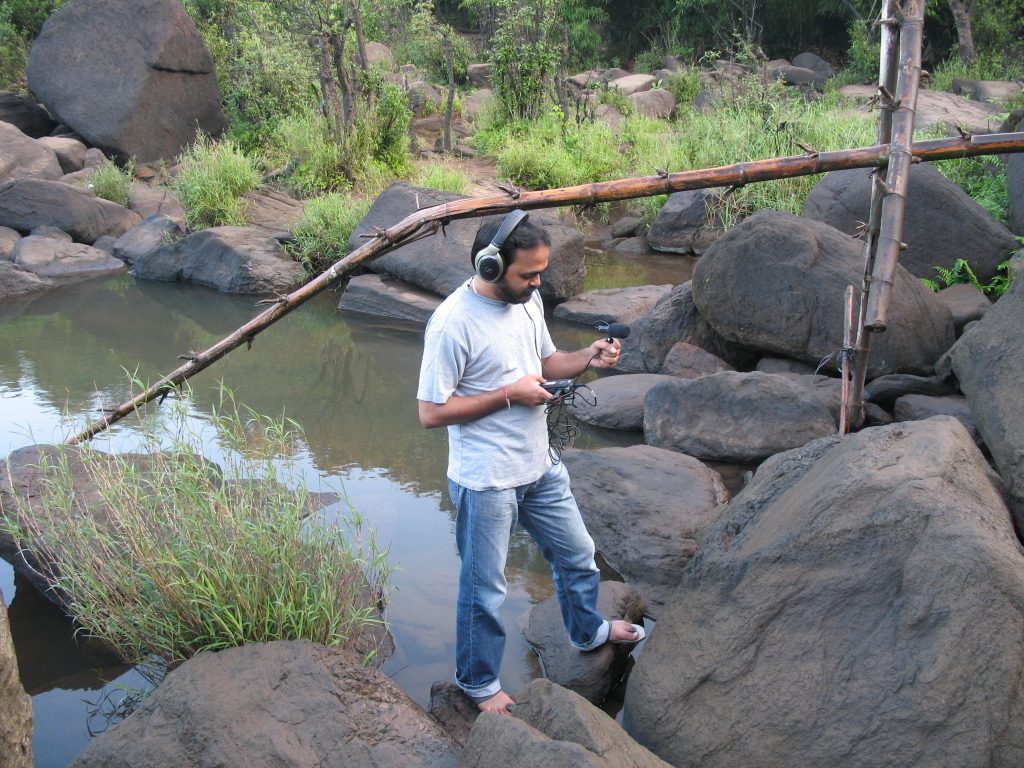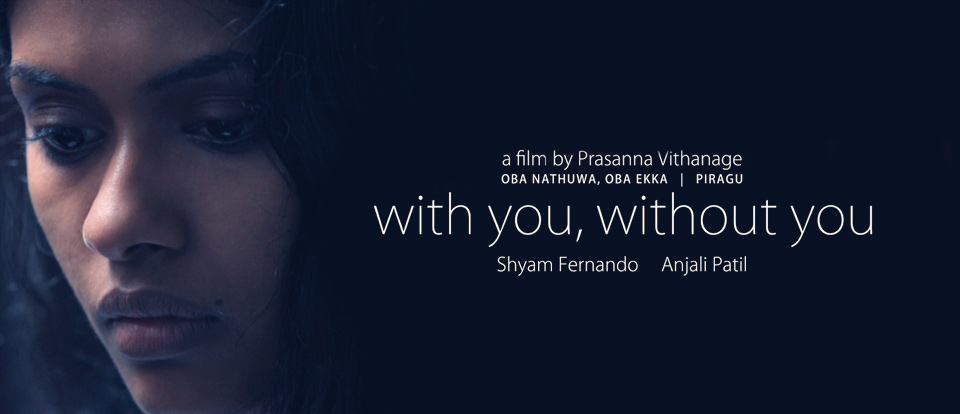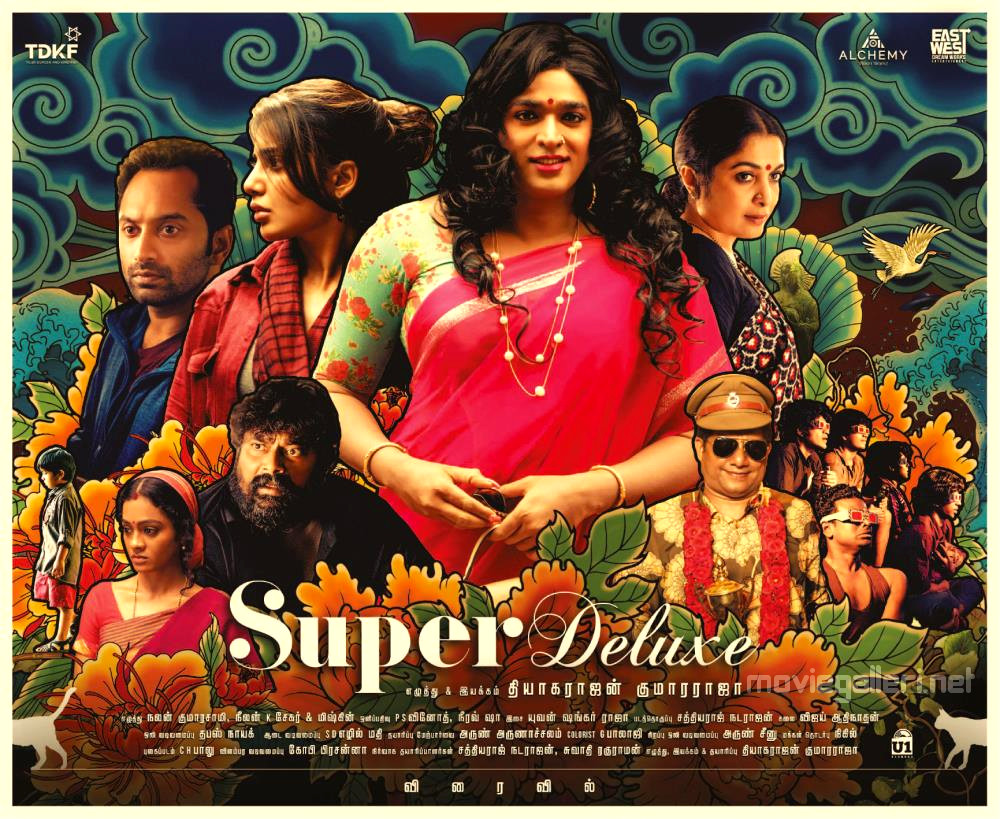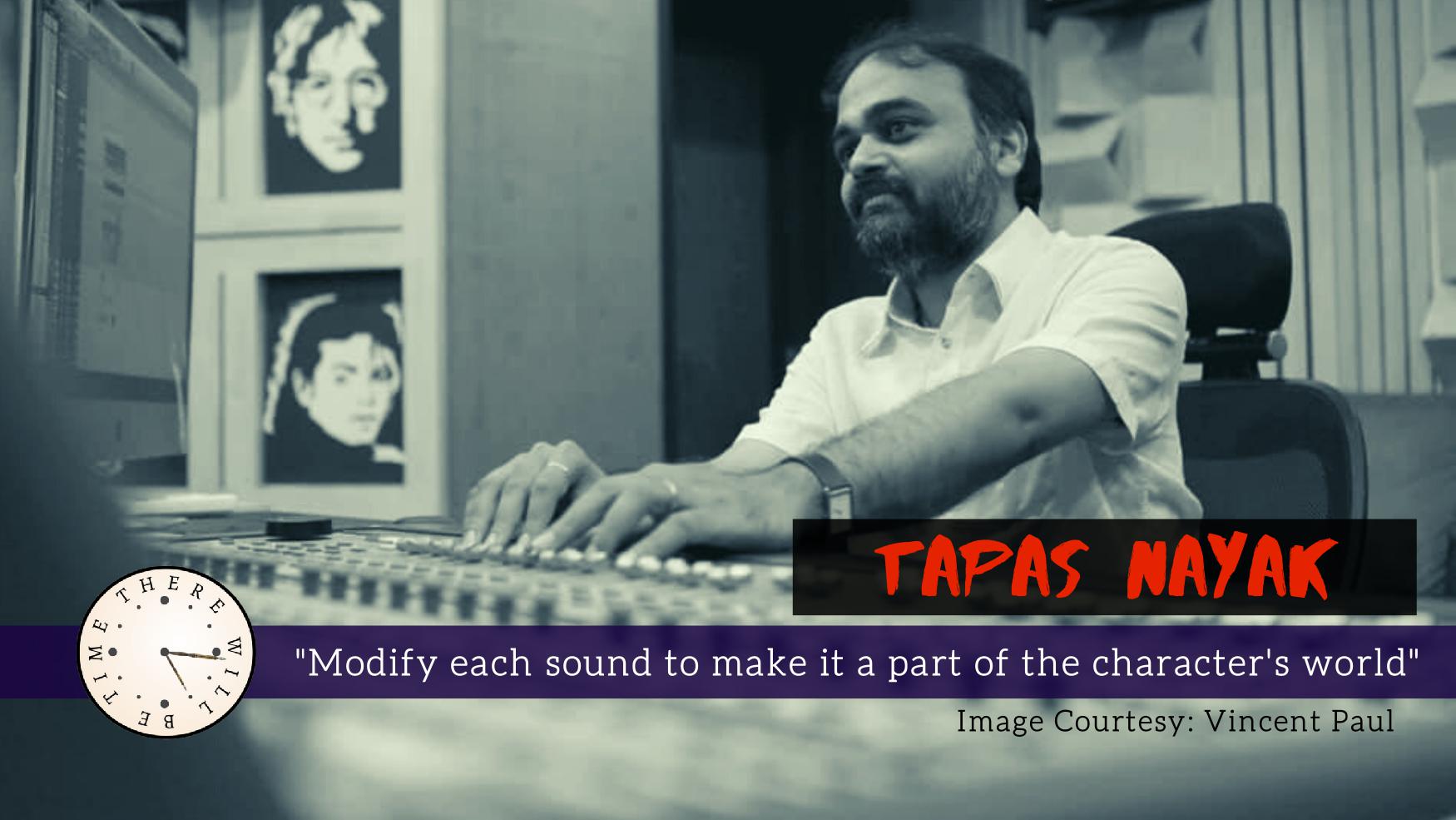When given an opportunity, Tapas Nayak likes to tell stories with sound.
Even while making films completely intended for the mass-market– this high-on-demand Sound Technician based in South of India loves to put in his delicate ‘aural’ touches that enhances the cine-viewing experience manifold.
Problem is, not many people usually discuss ‘sound’ when they brainstorm films.
Or understand its importance, for that matter.
That problem is universal for Sound Technicians in India. Mostly, the ‘audio’ aspect of the audio-visuals is taken for granted by the viewers – and sometimes even the makers of the films. Yes, the dialogue has to be recorded properly and the scene should have the right kind of ambiance and we need some ‘stock’ music, a violin or two when the mother cries and three violins when the son dies – but that’s all.
Let’s imagine a conversation…
“So do you want to use sound as a storytelling tool?”
“What’s that?? Come again???”
“Should we get a sound-designer on board at the scripting stage and see if he can contribute anything to the storyline…?”
“Duh. Are you crazy or what? We just give them the film after the first cut…and they will place the missing sounds…and some music..”
I can go on cribbing, but I believe that should be enough to give you a general idea of the status of most Sound Designers in Indian Cinema.
Nobody knows what they do; or what they can do.
The situation is changing though, with new directors coming in with alternate ideas and updated aesthetics; but I believe it will still take our industry time to warm up to the fact that Sound Designers can add a whole lot to the storytelling of a film.
It’s as much their job to tell the story as cinematographers and editors.
To start with, that’s what I asked Tapas – what is your job?

for Mani Ratnam’s film ‘Ravaanan’ – image courtesy Kumar C Dev.
I feel in order to understand how to give this ‘point-of-view’ to sound one has to learn how to watch movies from a sound perspective. We often get so engrossed with the visuals, that we do not (critically) hear the sound. That has to change.
While building an ‘eye’ for cinema, Tapas insists on building an ‘ear’ for it as well; more so if you are in the business of making films – you need to train yourself to ‘hear’ cinema while watching it. Or else, you end up with half-baked stuff.
He’s Charlie Sheen’s father, by the way – just to spike your interest a bit more.
‘The End’, that Doors song by Jim Morrison (used in the intro of Apocalypse Now) has been sort of an anthem for me since my childhood – but I never related it to the film till I saw it much later in my life. And yes, that co-relation between the fan-blades and the chopper-blades is something I spotted only after Tapas told me last week; so much for my claim of having a ‘sound’ mind.
Anyways, let’s focus on the task at hand.
I asked Tapas for a step-by-step delineation of what he does when he is approached with the task of designing ‘sound’ for a film; in other words, how he does what he does.

We will talk about that later, in our next post.
That ‘elimination’ methodology reminds me of Robert Bresson, again.
Of whatever little I have read of him, I still treasure a skinny little book of his from my ‘Nandan’ library days (no, I didn’t lift it from the library, but bought it from Golepark after reading it first at the library). It’s called ‘Notes on the Cinematograph’, and it’s (literally) a collection of rough, scattered ‘notes’ that gives us a glimpse into the mind of this great auteur director.
That book is loaded with ‘gems’.
I quote, “The noises must become music. Reorganize the unorganized noises (what you think you hear is not what you hear) of a street, a railroad station, an airport…play them back one by one in silence and adjust the blend.”
Can’t help but quote another reflection,
“Images and sounds are like people who make acquaintance on a journey and afterwards cannot separate.”

Their teamwork has continued since then, till the latest yet to release film ‘Gaadi’
After all this at-length discussion about ‘realism’ in building a soundscape, I had to ask Tapas about ‘sync-sound’ (sound recorded in location), and whether he prefers it over dubbing; at least in terms of imbibing ‘realism’.
But then, he already shared with us, even a film like ‘To Let’ which has been widely appreciated for its realistic soundscape was not sync-sound.
Noises did become the music there.
It has to be a tough task to do that level of dubbing without recording most of the actual sound on the set. I had to ask him what would be his core ‘principle’ while he is doing that. What is that one ‘tagline’ that he sets for himself?
Finally, we come to that all important question – of technology.
How critical is it to understand the latest advancements in technology to become a ‘sound designer’ in cinema?
The ‘ear’ of the audience is also evolving -isn’t it?
That’s what I think too Tapas; the soul has to be in place, and at the right place – for any work of art to reach its intended audiences. And not just for so-called art-house films – I mean every film, meant for all audience types.
I also asked Tapas Nayak about some of the toughest challenges and trickiest assignments that he might have faced in his now about two decades old career – first as an assistant to the renowned Sound Technician H Sridhar, and then independently as a Sound Designer and Mixer.
I wanted at least five of those ‘challenges’ – and we are yet to decide on which films to cover. Balki’s ‘Paa’ will be there for sure, and a couple of films of Prasanna Vithanange, and ‘Super Deluxe’ – that’s one caper that I am crazy about myself – especially due to its pulpy colours and irreverent space-time approach that reminds me of my first love – magic realism.
But all that will take some time. I also have a shoot coming, so let’s see.

especially on its totally kick-ass Color Scheme…let’s see…
I would like to mention here about a blog post I did a couple of weeks back on ‘TO LET’ – an award winning Tamil Film by Director/ Cinematographer Chezhiyan. Tapas designed the realistic sound for that film, and spoke extensively about that experience.
Let me also mention here, that feature image up there has been taken by young photographer Vincent Paul, in the studio of Tapas Nayak.
Before I take your leave, I have a personal ‘insight’ of sorts.
I am planning to do a blog post on documentary editing and sound-design, and the best crew that came to my mind for that included a former mentor and colleague of mine – Debashish Ghoshal from SRFTI.
While in the process of contacting him, I went to the SRFTI website. I don’t know why, but I started browsing its alumni list, to see if I could spot some familiar names.
I spotted Tapas Nayak – he is from the first batch of SRFTI.
I didn’t know that. Obviously, I had no reason to tell Tapas that I applied for and got a seat in the same department – to study Sound Engineering under Debashish Sir. That was for the second batch, I think in early 1997.
I drifted away without entering the course for some personal claptrap – but that’s another story. Fact is, if I had joined the course, Tapas would have been a year senior to me, and I would have met him then, 22 years back, and maybe learnt a few tricks of the trade from him.
Funny ‘What If’ feeling, that one!!
All I can say is – destiny does have peculiar ways to make people meet (and not meet) each other; but it’s never too late to meet; or to learn.
Better late than never, eh, Tapas!!!
how he managed to cut the phenomenal Apocalypse Now opening scene.
It was four layers of images, cross-dissolved in physical film, in a linear set-up. ..oops.
I think that’s what Tapas meant when he said ‘”Their limitations in technology was pushing them to achieve more.”


Very nice , as usual… Apart from leaving a cue or two for the young aspirants , it leaves something to think on for the movie -watchers too …